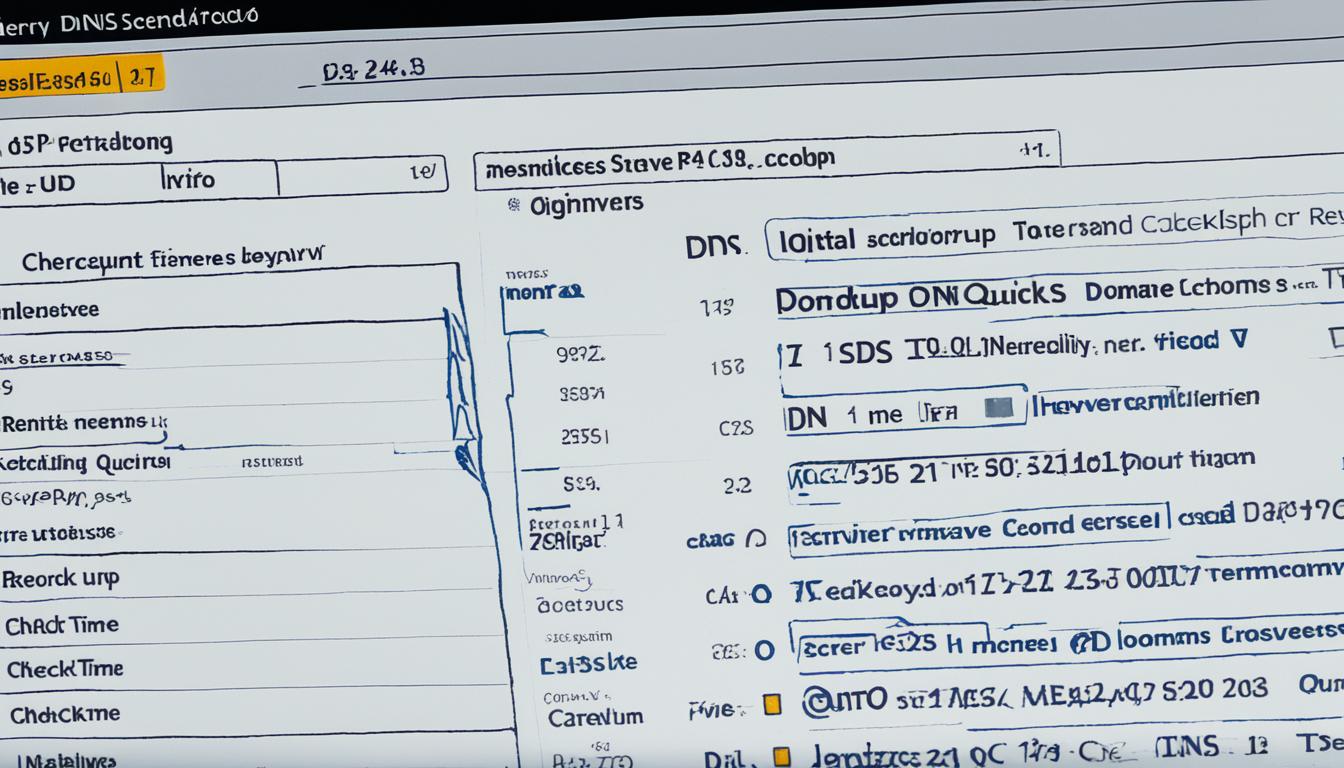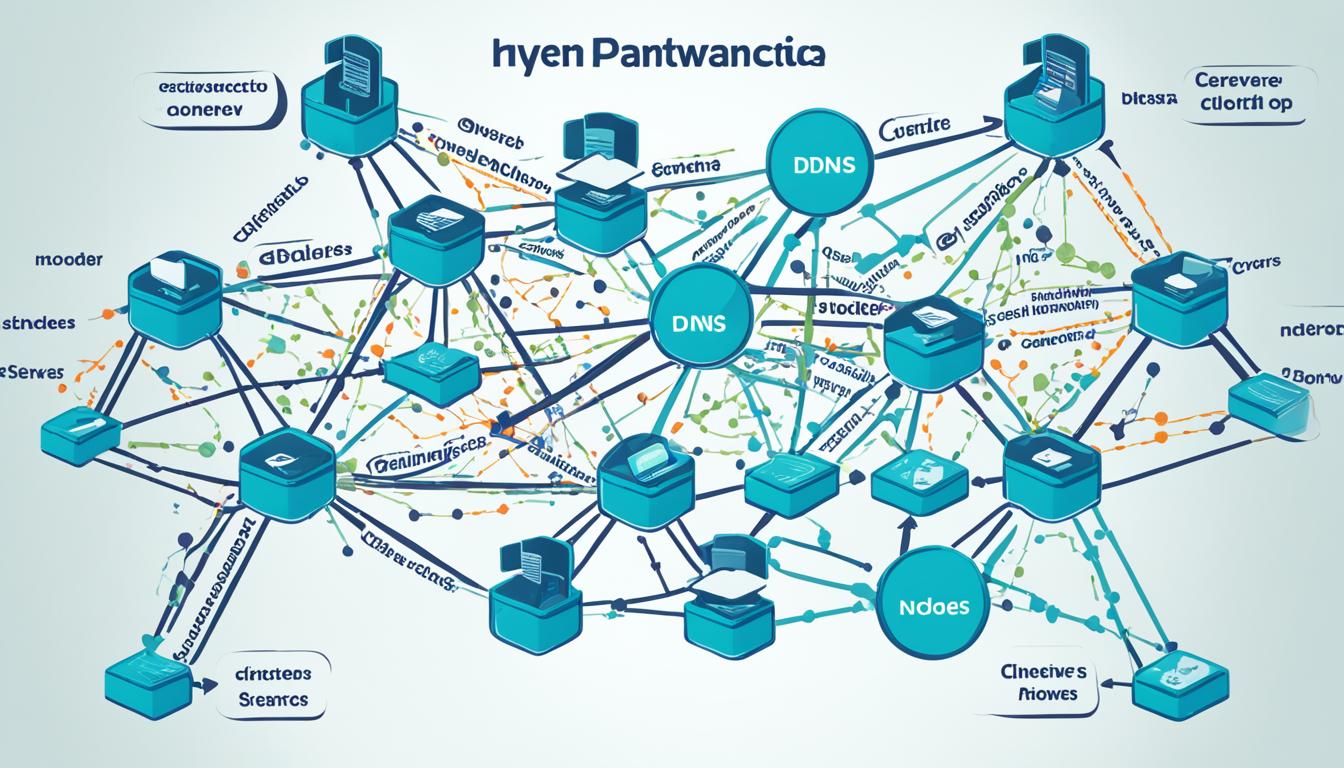What Is Computer Domain and Domain Name Definition?
When you enter a domain name, such as “www.example.com,” your computer sends a request to a Domain Name System (DNS) server, which then responds with the corresponding IP address. This process happens within milliseconds, allowing you to access the desired website almost instantaneously.
Understanding computer domains and domain names is essential for anyone navigating the online world. Whether you’re a website owner, a network administrator, or simply a curious internet user, this article will provide you with a comprehensive understanding of computer domains, their structure, and their significance.
Key Takeaways:
- A domain name refers to the address that users type in their browser’s search bar to access a website.
- Each domain name corresponds to a unique IP address, which allows for website accessibility.
- The structure of a domain name includes subdomains, second-level domain names, and top-level domain names.
- Choosing a good domain name is crucial for branding, SEO rankings, and business recognition.
- Understanding computer domains and domain names enables better navigation and management of online resources.
Understanding Internet Domains
An internet domain plays a crucial role in organizing, delivering, and accessing services on the internet. It serves as an administrative structure that enables users to navigate the vast online landscape seamlessly. One of the key components that facilitates this smooth navigation is the Domain Name System (DNS).
The Domain Name System (DNS) acts as a translator, converting user-friendly domain names into their corresponding IP addresses. Instead of remembering a series of complex numbers, users can simply recall a domain name to access their desired content. DNS operates using a decentralized and hierarchical system, ensuring efficient and accurate results.
At the heart of internet domains are IP addresses, which uniquely identify websites and resources on the internet. These addresses consist of a set of numbers that act as the digital coordinates for locating a specific website’s hosting server. By associating a domain name with its IP address, users can easily access the desired content with a simple click or search.
The hierarchy of internet domains starts with the Root domain, which serves as the foundation for all DNS operations. Moving up the hierarchy, we encounter top-level domains (TLDs) such as .com, .org, or .net. These TLDs provide a general categorization for websites based on their purpose or organization type.
Below the TLDs are the second-level and third-level domain names. These names form the unique identifiers for websites and specific webpages within a particular domain. For example, in the domain name “example.com,” the “example” is the second-level domain, while “com” is the top-level domain.
Exploring Network Domains
In the context of networks, a domain refers to a logical organization of connected physical network resources and users. It provides a structure for managing network resources and users under a single administrative umbrella. A network domain includes servers, desktops, printers, and other devices, and it allows administrators to control access to resources and apply policies at a granular level.
One common network domain used in Windows networks is Active Directory Domain Services (AD DS). AD DS provides a centralized and secure way to manage network resources, users, authentication, and access control. It acts as a centralized database where network information, such as user accounts, group policies, and security settings, is stored. A domain controller is a server that runs AD DS and manages the domain, handling authentication requests, enforcing security policies, and replicating changes across the network.
By using AD DS, administrators can easily manage network resources, delegate administrative tasks, and enforce security policies. They can also define roles and permissions for users, control access to network resources, and streamline the process of authenticating users across the network.
Benefits of Network Domains
Network domains offer several benefits, including:
- Centralized management: Network administrators can easily manage and control network resources, user accounts, and security policies from a central location.
- Granular access control: With network domains, administrators can set specific permissions for users, controlling their access to resources and ensuring data security.
- Efficient resource allocation: Network domains help optimize resource utilization by allowing administrators to allocate resources based on user needs and organizational requirements.
- Streamlined authentication process: With AD DS, users can log in once and access resources across the network without the need to reauthenticate.
Network domains play a crucial role in ensuring a secure and well-managed network infrastructure. They provide a framework for organizing and controlling network resources, facilitating efficient collaboration and resource sharing among users.

Understanding Domain Knowledge
Domain knowledge is a crucial aspect when it comes to expertise in a specific field or industry. It goes beyond the basic skill set and encompasses specialized knowledge about a particular domain. In the context of computer networks, a key term to understand is the hostname, which is a domain name that is associated with at least one IP address. Hostnames play a vital role in identifying resources and indicate ownership or control of a resource, such as in URIs and SIP realm identifiers.

In the world of technology, domain knowledge empowers professionals to navigate their respective industries with finesse. For example, in the field of cybersecurity, domain knowledge allows experts to understand the intricacies of network vulnerabilities and develop robust defense mechanisms. Similarly, in the healthcare industry, domain knowledge enables healthcare professionals to provide accurate diagnoses and effective treatment plans.
Whether it’s the IT sector, finance, engineering, or any other industry, possessing domain knowledge is crucial for professionals to excel in their respective fields. It helps individuals understand the nuances of their industry, stay updated with the latest trends and developments, and make informed decisions.
Being well-versed in domain knowledge not only enhances an individual’s professional growth but also strengthens their credibility within their field of expertise. It enables professionals to contribute effectively, solve complex problems, and drive innovation in their industry.
Exploring the Domain Name Space
The domain name space is a hierarchical structure that encompasses all domain names. Each domain name consists of one or more labels, separated by dots, with the right-most label representing the top-level domain. These domain names adhere to a specific syntax and can be either fully qualified domain names (FQDNs) or hostnames.
In order to ensure the orderly management of domain names, the Internet Corporation for Assigned Names and Numbers (ICANN) oversees the top-level domain name space. Individuals and businesses can register their desired domain names through domain name registrars, who act as intermediaries between users and ICANN.
Within the domain name system, there also exist second-level and lower-level domain names. These provide users with the opportunity to reserve domain names that are unique to their networks or websites, further allowing for greater customization and branding.
FAQ
What is a computer domain?
What is the definition of a domain name?
What is an internet domain?
How does the Domain Name System (DNS) work?
What is a network domain?
What is domain knowledge?
How is the domain name space structured?
Who manages the domain name space?
Can I reserve domain names for my network or website?
- How Strategic SEO Drove Growth for a CPAP E-commerce Brand - July 24, 2025
- Top 3 SEO Companies in Toronto: An Analytical Comparison - July 23, 2025
- SEO for Entry Door Services - April 24, 2025





















Post Comment
You must be logged in to post a comment.